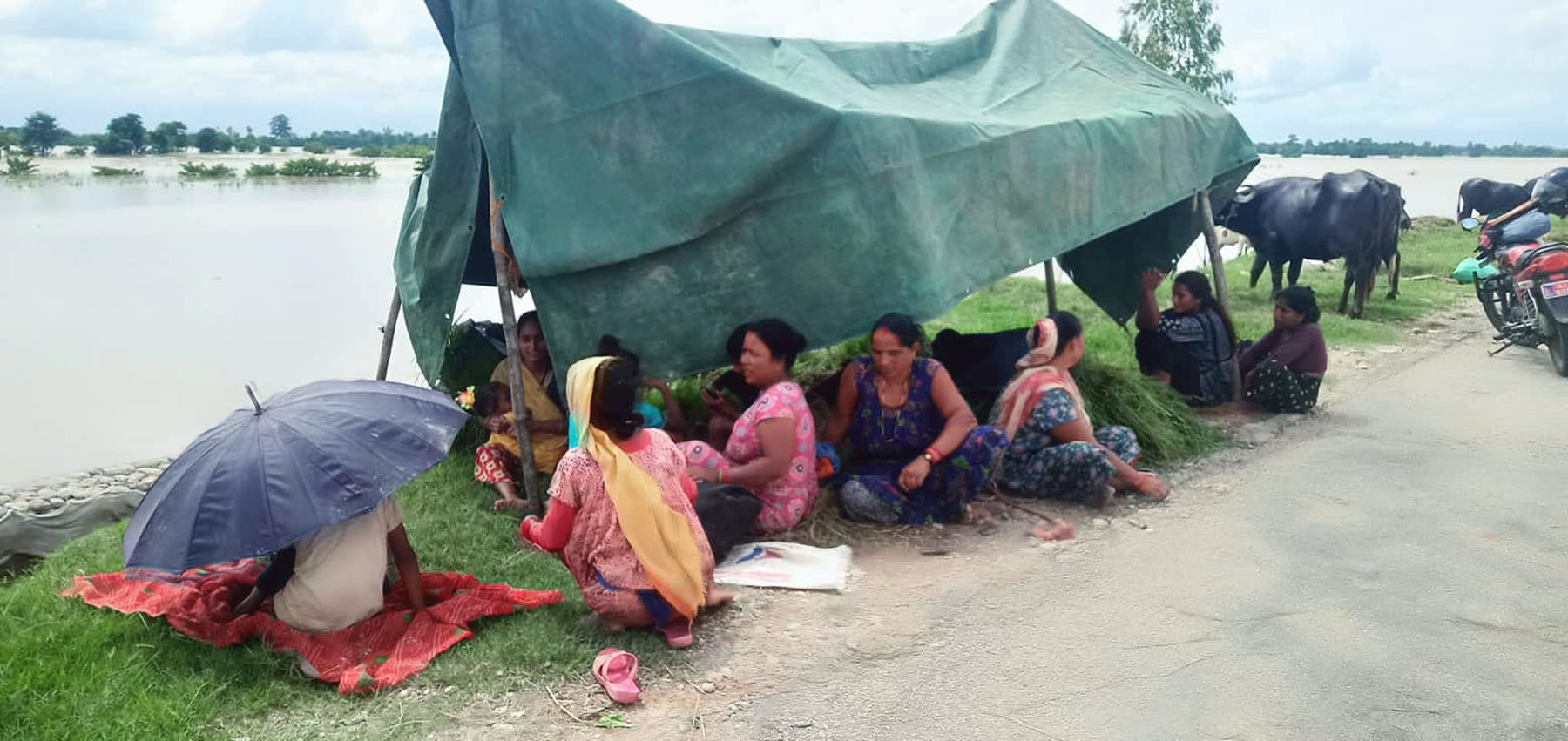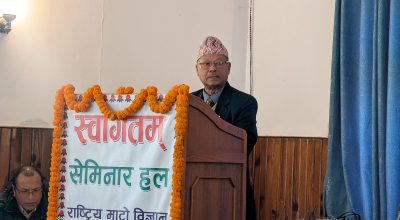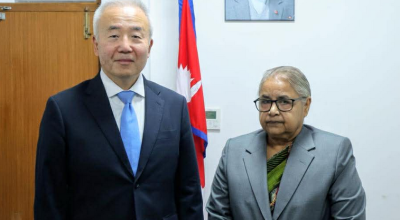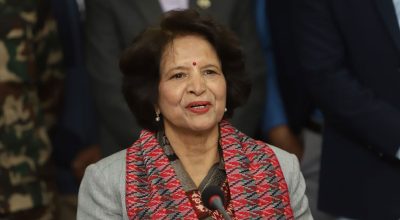
Pabitra Guragain
Kathmandu, March 31: Stakeholders in Nepal have called for augmenting human resources, their capacity and mandate, and establishing a dedicated mechanism to address climate finance issues.
There are over 1,300 climate funds globally, but Nepal has not got access to them to its full capacity, thanks to a lack of skilled human resources, they argued.
There are limited national accredited agencies (only three agencies; AEPC, NTNC and NIMB) to access international climate funding from the Global Environmental Facility (GEF), which has made it difficult for Nepal to draw global climate finance, said governance and policy expert Dr Raju Thapa. GEF is a multinational UNFCCC (the United Nations Framework Convention on Climate Change) financial mechanism designed to fund initiatives tackling worldwide environmental concerns, including climate change.
He was speaking at a recent event organised here to publish a report on the Status of Climate Finance in Nepal, 2024 prepared by the Environment and Engineering Research Center (EERC), a consulting and research institute based in Nepal.
In the context, when Nepal bears a brunt of climate change due to excessive environmental degradation by the developed countries in particular, and the excesses are increasing over the years, there is a need to find ways to attract climate finance globally, he added.
Dr Thapa pointed out many other challenges Nepal is facing when it comes to climate finance, some of them being as lack of private sectors’ involvement in climate change, policy uncertainties and inconsistencies related to mobilising climate finance, and challenges in ensuring equitable distribution of climate funds with only a fraction reaching vulnerable at the local level.
Other challenges include absence of a centralised platform for managing and sharing climate finance-related data, very low climate funding spending rate, inadequate coordination across sectors and among governments at different levels, and limited awareness and understanding of climate finance mechanisms among stakeholders, particularly at the grassroots.
Similarly, Porgramme Director at the National Planning Commission, Hari Narayan Belbase, said dedication is missing on the part of government employees in carrying out climate-related activities. He referred to the trend of opening a related authority, which he said would ultimately result in dysfunction for want of related activities like a lack of regular meeting expected to focus on assigned agenda. He offered a suggestion of opening a unit under the Office of the Prime Minister, which can effectively coordinate and mobilise resources on climate finance.
Undersecretary at the National Disaster Risk Reduction and Management Authority, Prakash Adhikari, viewed disasters caused by climate change must be taken seriously. He also suggested shedding light on disaster insurance.
Meanwhile, according to the report, Nepal received climate finance worth $13,454 million in a decade (from 2013 to 2022) with bilateral finance worth $6,038 million and $7,416 worth of multilateral finance. The figure under multilateral finance has increased from $383.5 million in 2015 to $699.04 million in 2022 with a peak of $1314.94 million in 2020.
Similarly, Nepal received the total 1747 projects related to climate finance in a decade (from 2012 to 2021). The figure has also steadily surged from 89 in 2012 to 400 in 2021.
Analysing the statistics in a decade (from 2015/16 to 2023/24), the Federal Government of Nepal allocated high percentage of climate budget in climate neutral budget, 81 percent in 2015/16 to about 65 percent in the current fiscal year.
Similarly, climate relevant budget has increased to around 30 percent in the current FY from nearly 14 percent in 2015/16. However, highly climate relevant budget has remained hardly six percent throughout the entire decade.
Highly relevant budget focuses on only climate finance while relevant budget refers to the subject more or less related to climate finance. Climate neutral budget is indirectly related to climate finance.
By provinces, four provinces–Sudurpaschim, Bagmati, Lumbini and Koshi–were selected for the study. Of the provinces, Sudurpaschim has fared well in terms of allocating highly climate relevant budget with an increase of 43.43 percent budget allocation in 2019/20 to 45.11 percent in the current FY. Similarly, Bagmati is on a downturn from 9.16 percent to 7.49 during the same period. When it comes to Lumbini Province, it is on an upturn from 6.02 percent to 14.11 percent. The statistics with Koshi Province shows a negligible increase from 14.32 percent to 14.33 percent.
For dealing with climate change and finance, Nepal needs around USD 20 billion from 2023-2025 and about USD 30 billion from 2026-2030, according to the report. Nepal’s initiatives towards climate change management started since 1992 by signing UNFCCC. #Nepal #RSS
















